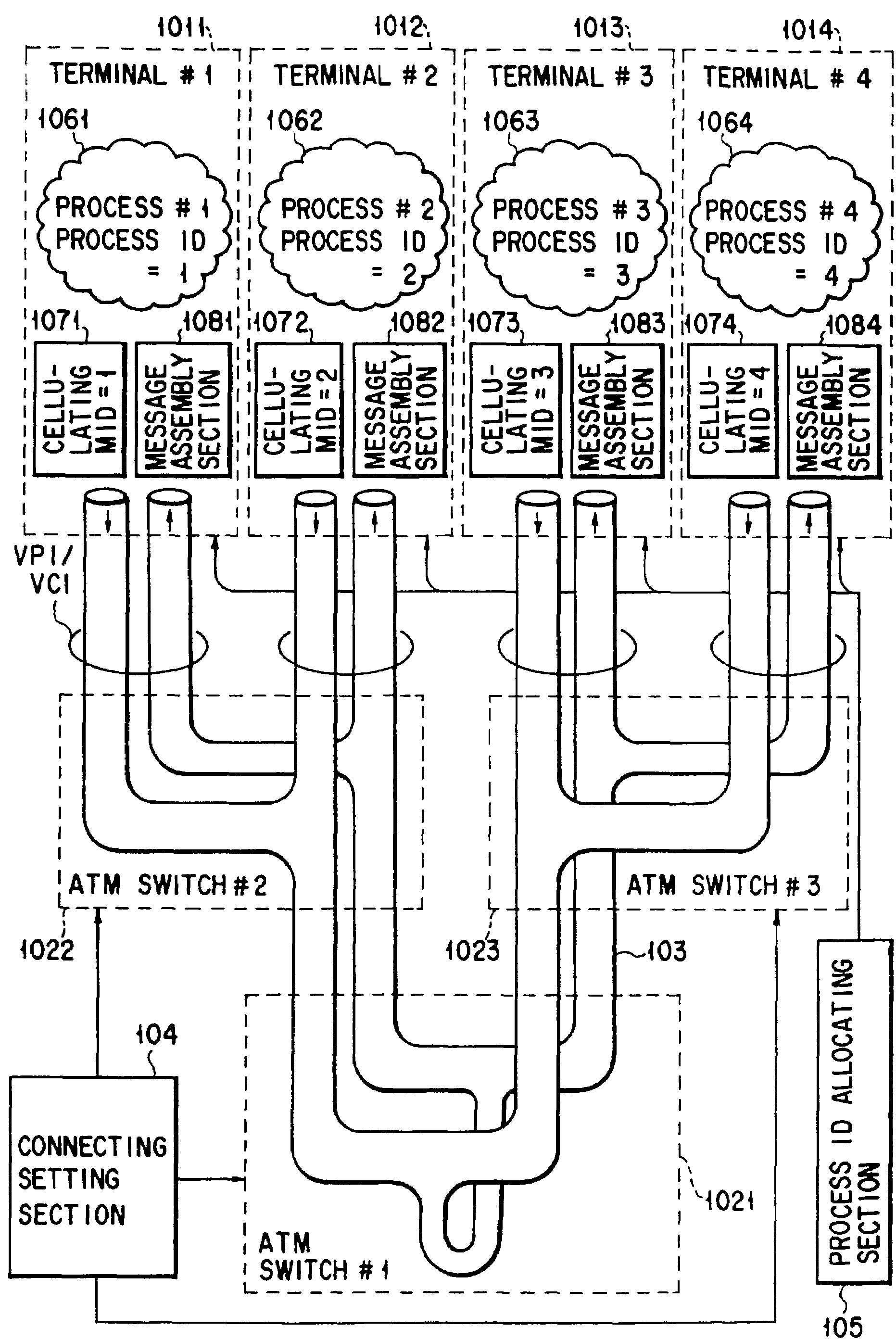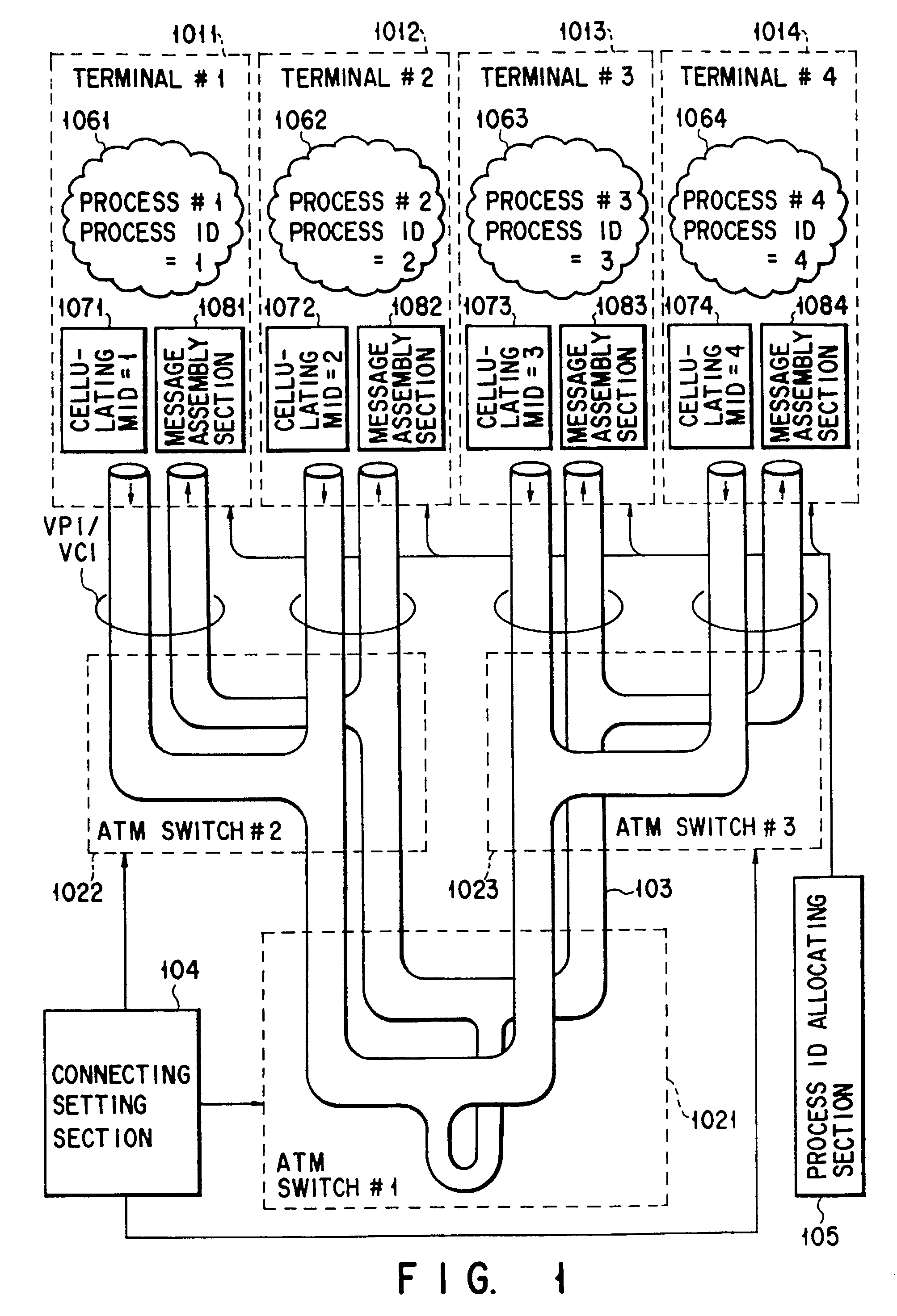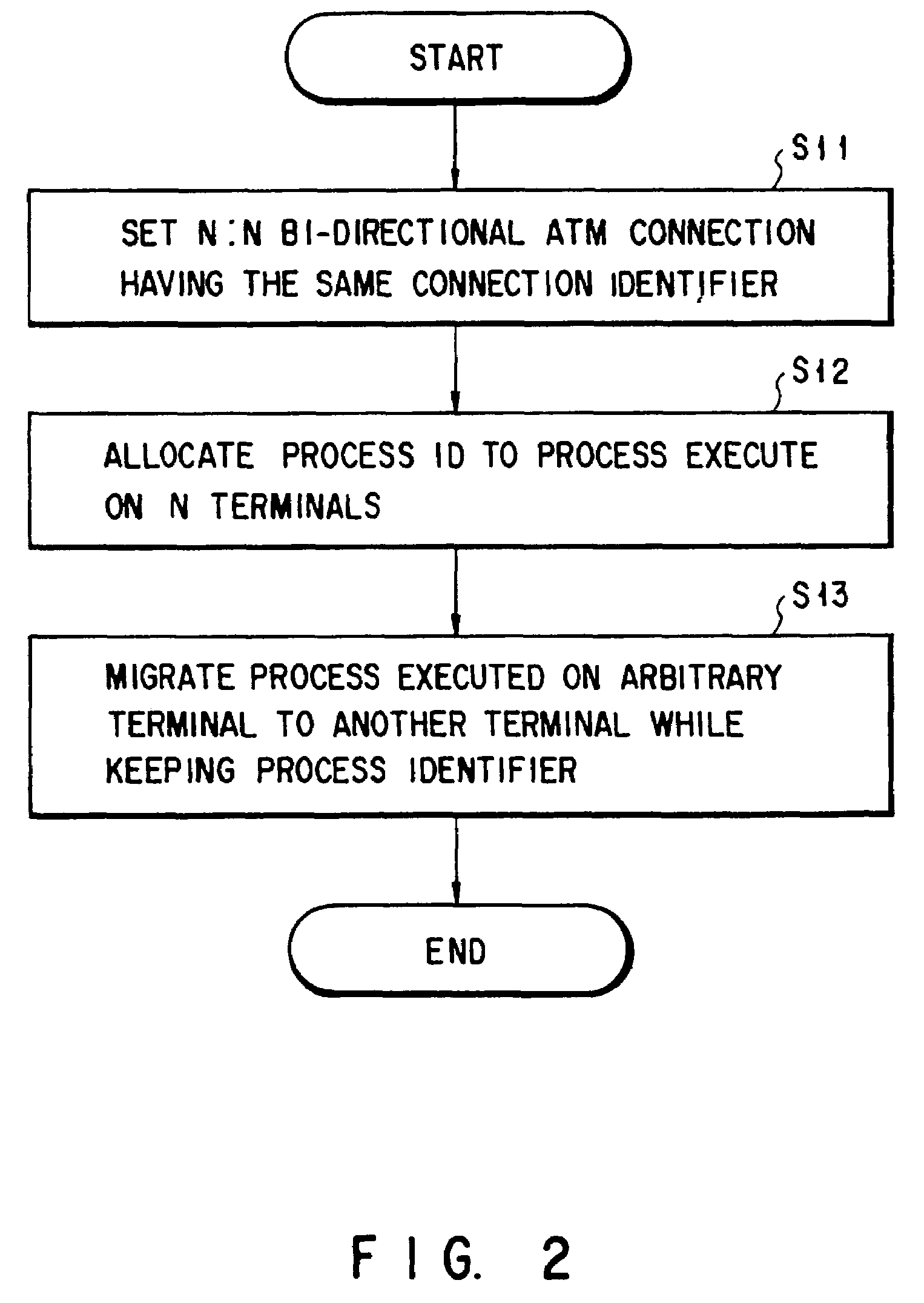ATM communication system, process migration method in the ATM communication system, and handover processing method
a technology process migration, applied in the field of atm communication system, can solve the problems of inability to obtain communication bandwidth, inability to efficiently perform communication, and inability to efficiently perform multi-media applications in the atm communication system, and achieve the effect of reducing system cost and rapid process migration
- Summary
- Abstract
- Description
- Claims
- Application Information
AI Technical Summary
Benefits of technology
Problems solved by technology
Method used
Image
Examples
embodiment 1
Concrete Operation of Embodiment 1
[0092]The operation of this embodiment will be more concretely described below. The processes #1 to #4 (1061 to 1064) executed on the terminals #1 to #4 (1011 to 1014) are connected to each other by the 4:4 bidirectional ATM connection 103. An MID serving as a process identifier used when a message is sent to the bidirectional ATM connection 103 is allocated to each of the processes #i (106i). When each message received from the processes #i (106i) is to be divided into cells by a cellulating sections 107i, the MID is added to each of the divided pieces. When the messages are to be assembled by message assembly sections 108i, cells having the same MID are gathered to assemble the messages. In this manner, even if cells from a plurality of message sources are merged and given to the message assembly sections 108i, the message assembly sections 108i can correctly reproduce the messages unless the arriving order of the cells sent from the same process ...
embodiment 2
[0132]The present invention can be applied in not only a situation wherein messages sent from all processes must be received as shown in FIG. 1, but also a situation a process group for sending messages is different from a process group for receiving the messages. FIG. 8 shows a situation wherein four processes for sending messages and two processes for receiving the messages are present. Such a situation occurs in a case wherein respective processes specially realize different functions, e.g., so-called server client computing. Other concrete examples wherein such a situation occurs will be described later.
[0133]In the embodiment shown in FIG. 8, four processes (to be referred to as sending processes hereinafter) #1 to #4 (7011 to 7014) for sending messages are connected to the information input side of a 4:2 unidirectional ATM connection 702, and two processes (to be referred to as reception processes hereinafter) #1 (7031) and #2 (7032) are connected to the information output sid...
second embodiment
Actual Operation of Second Embodiment
[0135]Messages sent from sending processes #i (701i) to the 4:2 unidirectional ATM connection 702 are given to the processes #1 (7031) and #2 (7032) through the 4:2 unidirectional ATM connection 702. As in the case shown in FIG. 1, in order to perform communication and to use a variable length message, cellulating functions 1035 to 1038 in an adaptation process are arranged between the sending processes and the 4:2 unidirectional ATM connection 702, and message assembly functions 1045 and 1046 of the adaptation process are arranged between the 4:2 unidirectional ATM connection 702 and the reception processes. Functions realized by these cellulating functions and message assembly functions are the same as those in FIG. 1. Therefore, when the MIDs of an AAL3 / 4 are allocated to the sending processes #i (701i) for sending messages to the 4:2 unidirectional ATM connection 702, according to the following manner, messages sent from the sending processes...
PUM
 Login to View More
Login to View More Abstract
Description
Claims
Application Information
 Login to View More
Login to View More - R&D
- Intellectual Property
- Life Sciences
- Materials
- Tech Scout
- Unparalleled Data Quality
- Higher Quality Content
- 60% Fewer Hallucinations
Browse by: Latest US Patents, China's latest patents, Technical Efficacy Thesaurus, Application Domain, Technology Topic, Popular Technical Reports.
© 2025 PatSnap. All rights reserved.Legal|Privacy policy|Modern Slavery Act Transparency Statement|Sitemap|About US| Contact US: help@patsnap.com



